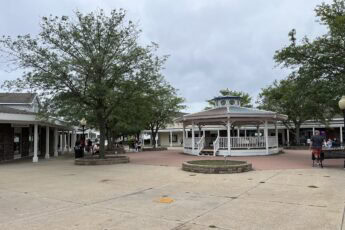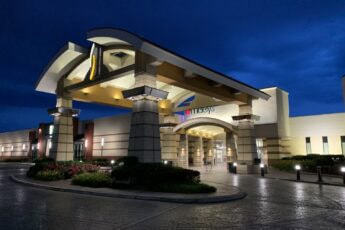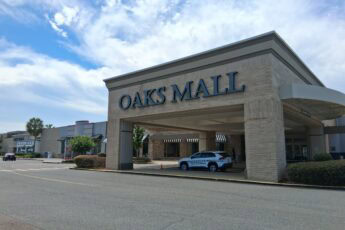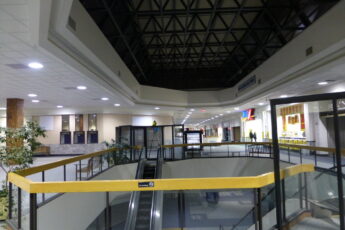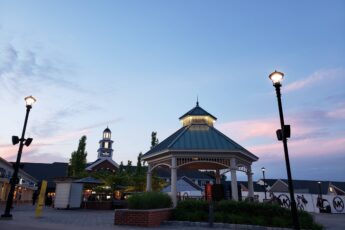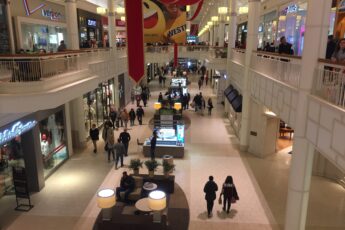Initial Planning and Site Development of RiverTown Crossings
In 1981, General Growth Properties acquired 99 acres of land in Grandville, Michigan, for commercial development. The land, originally intended for industrial use, became the focus of ongoing mall development discussions throughout the 1990s.
Early competition emerged in 1990 when Homart Development Company, a subsidiary of Sears, expressed interest in building a 120-store mall at the nearby intersection of 44th Street and Ivanrest Avenue. However, their proposal faced zoning issues and local opposition.
In 1991, Grandville's city council rejected Homart's initial plans, citing the availability of commercially zoned land along Rivertown Parkway, which General Growth already controlled.
Despite this setback, Homart's efforts persisted until internal changes, including the sale of Homart Development Company in 1994, shifted the focus back to General Growth Properties. By 1995, General Growth had fully taken over the Rivertown project after acquiring additional land.
General Growth Properties encountered resistance from the City of Grandville throughout the 1990s. Initial plans faced rejection in 1994 when the city denied a proposal for a 150-store mall.
Grandville's Mayor James Buck voiced concerns over adding more commercial space in the area. The city's opposition stalled development, even as General Growth secured more land for the project.
By August 1996, General Growth made key concessions. They agreed to limit the mall's footprint entirely within Grandville city limits, addressing local worries about urban sprawl. This compromise allowed negotiations to resume, leading to an approved plan in October 1996.
The city council gave the green light to a project spanning 138 acres, with revised designs emphasizing a more localized shopping destination.
The updated plan laid out space for four anchor stores and over 130 additional retailers. General Growth's persistence, coupled with adjusted design goals, finally gained community and political backing.
With plans finalized by mid-1997, construction broke ground on December 6, 1997. The approval marked the end of a years-long struggle to align city interests with commercial ambitions.
Construction and Grand Opening (1997-1999)
General Growth invested approximately $160 million into the development, which in today's value would be around $260 million. The location became a hub of activity as workers built a two-story mall featuring over 1.2 million square feet of retail space.
Key anchor stores like Sears, Hudson's (later Marshall Field's, then Macy's), JCPenney, and Kohl's began setting up shop early in the process.
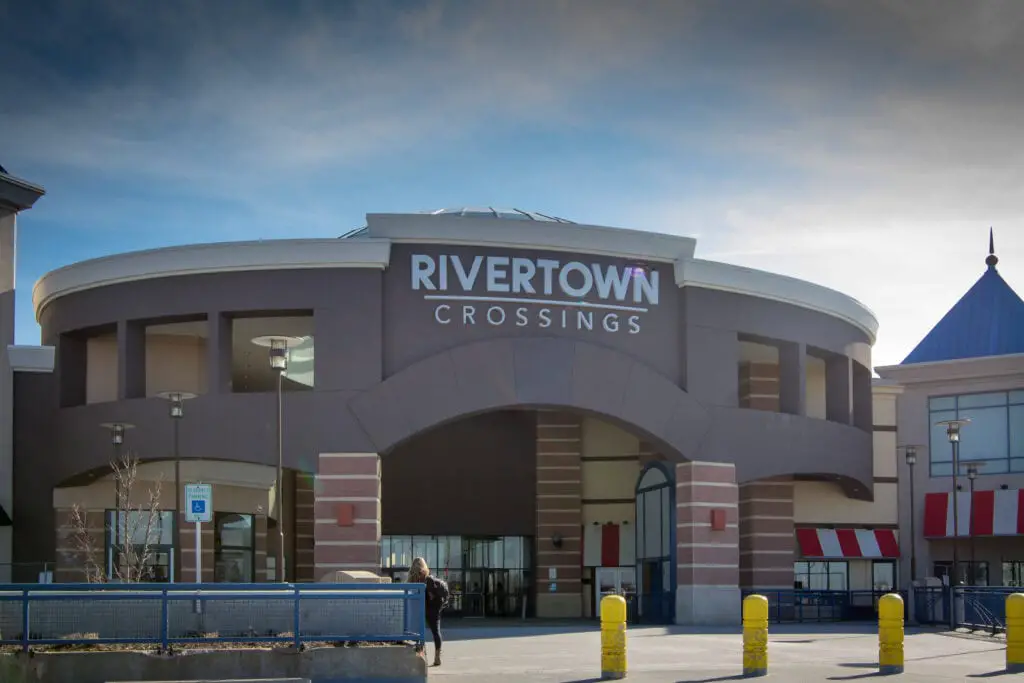
RiverTown Crossings opened to the public on November 3, 1999, just in time for the holiday shopping season. Early attractions included a 20-screen Cinemark theater, a Barnes & Noble, and Galyan's (now Dick's Sporting Goods).
The opening marked a transformative moment for retail in West Michigan, bringing together a variety of stores under one roof.
The mall quickly became a major draw for the region, sparking further development around the Rivertown Parkway area. Restaurants, hotels, and additional retail establishments began sprouting up, turning the once-quiet site into a bustling commercial corridor.
The things to do in Grandville, MI, expanded rapidly as more businesses followed the mall's lead, reshaping the local economy and establishing RiverTown Crossings as a retail destination in the greater Grand Rapids area.
Early Growth and Surrounding Development
By 2000, Old Navy joined as a junior anchor inside the mall, while nearby properties saw new businesses moving in to capture increased foot traffic.
The area's retail footprint expanded rapidly, with stores like Meijer opening just outside the mall in March 2002.
The mall's success attracted eateries, big-box retailers, and service providers to the surrounding area. Fast food chains like McDonald's and Taco Bell quickly set up shop, followed by sit-down establishments like TGI Fridays and Red Robin.
As more stores opened, the area grew into a retail hub for nearby cities like Holland and Zeeland. Commercial real estate values increased as businesses vied for spots near the high-traffic location.
This development boom wouldn't have been possible without the early momentum created by RiverTown Crossings, which set the stage for the area's rapid transformation.
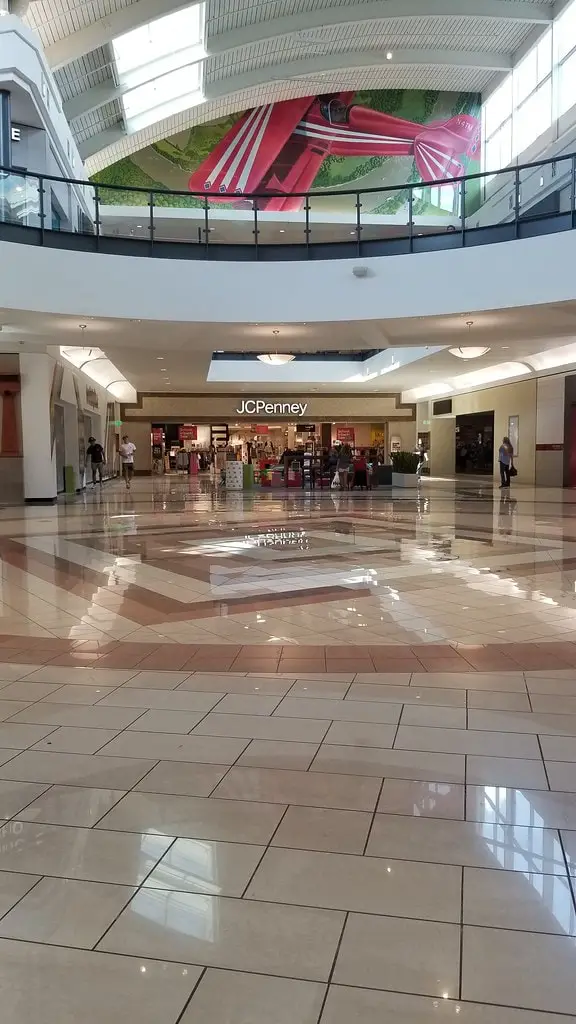
Anchor Store Transitions and Retail Challenges
The mall's early years saw several changes in its anchor lineup. Hudson's, one of the original anchors, rebranded as Marshall Field's in 2001 before transitioning to Macy's in 2006.
Meanwhile, other stores faced challenges. In 2018, Younkers closed after its parent company, The Bon-Ton Stores, filed for bankruptcy. Sears followed suit, shutting its doors in early 2021 as part of a nationwide downsizing strategy.
These closures left gaps in the mall's anchor space, prompting RiverTown Crossings to explore alternative uses. Seasonal tenants like Spirit Halloween temporarily filled vacant spots while the mall looked for longer-term solutions.
In March 2024, a Fun City Trampoline Park was announced to take over the former Younkers space, marking a shift toward more experience-based attractions.
Retail changes like these highlight the evolving landscape of brick-and-mortar shopping. As traditional department stores struggled, the mall adapted by bringing in more interactive, entertainment-oriented tenants.
Renovations and Cultural Shifts
Over the years, RiverTown Crossings has undergone various updates to keep pace with changing trends. In 2017, the mall received a minor renovation that altered some of its original aesthetics.
A series of murals painted by Chicago artist Thomas Melvin in 1999 were mostly removed, leaving only those above certain anchor stores. This change marked a shift in the mall's visual identity, moving from the original late-90s style to a more modern, streamlined look.
The mall's food court has seen its share of changes. While the iconic carousel remains a central feature, newer fast-casual options have replaced some of the original food vendors. These shifts reflect broader industry trends as dining experiences become a bigger part of many visitors' shopping trips.
The 20-screen Celebration Cinema, one of the mall's original anchors, remains a top draw. Consistently ranking among Michigan's busiest theaters, it demonstrates how entertainment still plays a key role in keeping foot traffic steady.

Latest Developments at RiverTown Crossings (2023-2024)
RiverTown Crossings Mall in Grandville, MI, faces challenges in adapting to a changing retail landscape. Declining foot traffic, empty stores, and aging infrastructure highlight the difficulties.
The closure of Sears, once a key anchor, underscores the struggle to keep the mall relevant. Deterioration in the parking lots and certain areas inside has made it less appealing for shoppers and tenants alike.
Strict zoning and signage regulations from 25 years ago have restricted visibility and accessibility, limiting growth opportunities.
The mall's fragmented ownership - divided among multiple property holders - adds complexity to decision-making and improvements. These barriers make coordinated redevelopment tough, contributing to the mall's decline.
Despite these hurdles, efforts are being made to revitalize the space. The old Younkers location is being repurposed, with a trampoline park set to open on the upper level. This addition targets families and aims to boost visitor numbers.
Local leaders have also proposed updates to the area's Master Plan, allowing more flexible uses, including office spaces, though there's uncertainty about whether these changes will fully resolve deeper issues.

